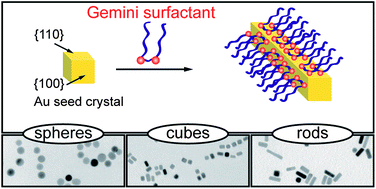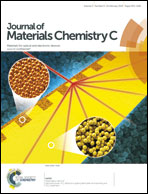Anisotropic growth of gold nanoparticles using cationic gemini surfactants: effects of structure variations in head and tail groups†
Abstract
A library of gemini surfactants is employed to study surfactant directed anisotropic growth of gold nanoparticles. The surfactants are modified with respect to the length and type of the tails, as well as of the spacer group. By analyzing the structure of the anisotropic nanoparticles, it is possible to extract information on how the structure of the surfactants influences the anisotropic gold nanocrystal growth. We find that the tail length of the surfactants has a greater influence on the resulting nanoparticle aspect ratio compared to the chemical nature of the spacer group. While clear trends between the aspect ratio and the tail as well as spacer length remain elusive, we observe that surfactants with a critical micelle concentration of ∼1 mM produce particles with the highest aspect ratio. A crystallographic analysis of nanorods obtained using gemini surfactants reveals that they grow along 〈100〉 and are bound by {310} facets. This observation, which is specific for gemini surfactants, is explained by taking into account the preferential alignment of gemini surfactants with surface steps as suggested by electronic structure calculations.


 Please wait while we load your content...
Please wait while we load your content...